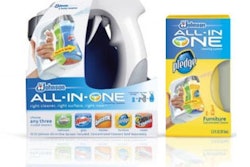
In 2009, Starbucks publicly announced a goal to make 100% of its cups—that’s 4 billion cups globally each year—recyclable or reusable by 2015. To many consumers, with expectations heightened by the greenwashing routinely served up by other brands, a five- to six-year time frame seemed like a feeble attempt.
Jim Hanna, Starbucks director of Environmental Impact, speaking at the Sustainable Packaging Symposium in March, shared one customer’s initial response: “Starbucks has promised to make cups recyclable by 2015. Why do they think it will take five years to do what any kindergartener around the world can already do every day?”
But Starbucks’ initiative was far more challenging than any kindergartener could imagine. Despite the 54 billion cups produced annually in the U.S., many municipal recycling facilities and recycled paper mills do not accept coated feedstock. “A set of barriers to recycling post-consumer cup stock has historically excluded the material as a potential valuable feedstock for recycled paper mills,” reads the “Starbucks et al” awards submission. “These barriers include concerns over food contamination, ability to separate the polyethylene coating from the paper, the presence of kraft sleeves on bleached cups, plastics lids, lack of consolidated volume of material, etc.”
In the meantime, consumer dissatisfaction with Starbucks’ inability to solve the issue of cup recycling has overshadowed other sustainable programs within the company that provide much more substantial environmental impacts. Among these, Starbucks announced in late 2010 that every store it builds will be LEED-certified, using 25% less energy and 25% less water, and its coffee sourcing system is the most ethical in the world, according to Hanna. “Our customers aren’t hearing that message because they have these blinders on about our cups,” he told attendees at SPS 2011. “Solving cup recycling is really a point of entry for us to talk about all the other great things we are doing as a company to differentiate ourselves.”
Cup recycling can and is being done, but not currently on a large scale. And until it is, Starbucks “is not going to take the easy way out and say, ‘This is a 100% recyclable cup,’ knowing full well that most customers actually have no access to those services in the places they dispose of their cups,” said Hanna. “We will not call our cups recyclable until in our stores, in public spaces, and in peoples’ homes and businesses, they have the opportunity to recycle cups.”
To work toward a solution, Starbucks held a Cup Summit, where all the participants in the value chain, including competitive brands, were invited to attend.
“Ironically,” reads the Greener Package Awards entry form, “potential solutions to this extremely complex issue and to Starbucks’ aggressive 2015 goal, are turning out to be essentially a revolution in common sense:
• Agree that a systems-based level of engagement is necessary
• Bring together multiple brands in a pre-competitive environment to create necessary scale
• Break down the perceived barriers to recycling used cups and verify their value as a feedstock for recycled paper mills
• Build market momentum for legitimate end-of-life options (and abandon those that don’t prove out) by taking advantage of the unique leverage each stakeholder holds within the value chain
• Engage in proactive policy discussion with local governments to elevate industry-driven solutions”
As a result, several pilot programs, involving Starbucks stores in Seattle and Chicago, in collaboration with Mississippi River Pulp, International Paper, and Georgia-Pacific, collected cups that were then successfully recycled and turned back into Starbucks cups and napkins. “What we discovered is that all those barriers were really just perceived,” said Hanna.
While this award applicant pointed out that it is still on a journey to reach its ultimate goal, where cups are universally accepted as an everyday recyclable commodity, it cited the “unprecedented level of engagement among competitors and nontraditional partners” and the “execution of critical mill tests and cup recycling market rollouts” as reasons judges should consider it for a Greener Package Award. Obviously, the judges agreed. (See full content of Jim Hanna’s SPS 2011 presentation at greenerpackage.com/node/3996.)
























